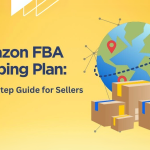SEO isn’t just about keywords and rankings. It’s about where you want to be found. Some businesses want to own their neighborhood, while others have their eyes set on the world. So, which path fits your goals?
When International SEO Makes Sense
Maybe you run an online casino, or you’re selling software to users in five countries. Suddenly, you need to speak to people in different languages, currencies, and cultures. International SEO is a different beast. It’s about structure – hreflang tags, country-specific domains, and content that feels local, even if it’s global.
Casino companies are a textbook example. They use bonus offers, game variety, and tailored promotions to attract players from all over. But it’s not just about the games. These brands invest in international SEO to reach new markets, adapting their sites for different regulations and preferences. Readwrite are currently listing online casinos that feature bonuses and features that appeal to players in the US, UK, and beyond. The competition is fierce, so standing out means more than just translating your homepage.
The Local SEO Playbook
Local SEO is all about showing up when someone nearby searches for what you offer. Think pizza shops, dentists, or that quirky vintage store on Main Street. If your customers are mostly locals, this is your game. Google My Business, local citations, and reviews matter more than fancy backlinks. You want to pop up in “near me” searches, not just generic results.
But local SEO isn’t just for brick-and-mortar. Service businesses – plumbers, realtors, even mobile dog groomers – thrive by targeting specific cities or regions. The focus? Hyper-relevant content, local keywords, and making sure your NAP (name, address, phone) is consistent everywhere. It’s not glamorous, but it works.
Real-World Examples: Who’s Winning at International SEO?
It’s not just casinos. Think about Airbnb. They didn’t become a household name by focusing on one city. Their site adapts to your language, shows prices in your currency, and even tweaks listings based on local laws. Shopify does the same, offering international sales tools via region-specific payment options and support. These companies know that international SEO isn’t a one-size-fits-all deal. It’s about making every visitor feel like the site was built just for them.
Local or International: What’s the Right Move?
So, how do you choose? Start with your audience. If most of your customers live within 20 miles, local SEO is your best friend. But if you’re seeing traffic from other countries, or you want to break into new markets, it’s time to think global. Just remember, international SEO takes more work. You’ll need to invest in translation, local content, and technical tweaks. But the payoff? Access to a much bigger pool of customers.
Quick Tips for Both Approaches
- For local: Claim your Google My Business (GMB) profile, get reviews, and use city-specific keywords.
- For international: Use hreflang tags, create country-specific pages, and research what matters to each market.
Wrapping Up
Local SEO is about owning your backyard. International SEO is about playing on a bigger stage. Both have their perks, and both require real effort. The right choice? It depends on where you want your business to show up and who you want to find you. Sometimes, the answer isn’t either-or. It’s both. Just don’t expect shortcuts. The businesses winning at SEO, local or global, are the ones putting in the work, day after day.
Lynn Martelli is an editor at Readability. She received her MFA in Creative Writing from Antioch University and has worked as an editor for over 10 years. Lynn has edited a wide variety of books, including fiction, non-fiction, memoirs, and more. In her free time, Lynn enjoys reading, writing, and spending time with her family and friends.















